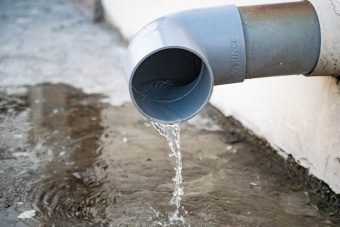
The draft of the Water management plan on the territory of Serbia for the next six years is in the final stage. Its fundamental goal is the protection and improvement of water resources in our country. We asked Nataša Milić, the acting manager of the Republic Water Directorate, what this strategic framework brings us concerning water management,the irrigation plans, what measures we take to protect against floods, and how to stop water pollution.
EP: The preparation of the Strategy of irrigation of Serbia started last year. What has been done so far, and who will benefit from this Strategy?
Nataša Milić: The Republic of Serbia and the European Bank for reconstruction and development signed the Loan agreement in 2019, which included preparing the Strategy for irrigation, with a five-year Action plan, which the grant would finance. Strategy for irrigation is a base for construction and exploitation of the irrigation system in the Republic of Serbia that will provide for sustainable usage of natural resources and their quality improvement. The project involves the preparation of seven technical documents which will analyze different aspects of irrigation: the price of water for irrigation, availability of water resources in the country, irrigation management, etc. In the upcoming time, there is a plan for organizing several webinars and workshops about irrigation, aiming for the full inclusion of the public into the strategy preparation process. We expect the first draft of the Strategy in September, and after that, the five-year Action plan preparation will start.
In focus:
EP: What size is the land that is irrigated, and in what parts of Serbia? Is the construction of some irrigation system underway, and if so, where?
Nataša Milić: According to the Statistical Office of the Republic of Serbia, the irrigation systems cover 69,695 ha, with precisely 50,366 ha irrigated. Therefore, with the Loan Agreement, we created the legal frame for drawing 97 million dollars from the Abu Dhabi Development Fund to construct the water facilities for irrigation that are the public property of the Republic of Serbia. To proceed with the implementation of the Development of irrigation systems project – Stage I, in 2020, we concluded the agreements for construction, remediation, and refurbishment of the water facilities on the territory of Bačka, Banat, and Srem. This year’s plan includes the continuation of financing of the construction works. With ongoing construction, remediation, and refurbishment of the water facilities, the conditions are created to irrigate an additional 67,000 ha of agricultural land. Based on the Loan Agreement, during 2021 and 2020, the irrigation infrastructure’s construction and rehabilitation in Eastern Serbia (The Municipality of Negotin) and central Serbia (The Municipality of Svilajnac) will be financed with 15 million euro.
EP: Is the Water Management Plan ready, and what changes it actually brings?
Nataša Milić: The Water Management Plan is the fundamental instrument that allows the implementation of the EU Water Framework Directive principles. It is the strategic frame for Integral water management. The Water Management Plan lays down the environmental goals for all water bodies on the surface and under surface waters. We need to achieve this by implementing water resources protection and improvement activities. That means that we will monitor the condition of every water body (watercourse segment) and take measures for maintaining its good condition, or provide for good condition by reducing or stopping further pollution. It is the first plan of the kind in our country, created according to all standards of EU legislation in the water sector and stipulations of domestic laws. The finalization of the Water Management Plan draft at the territory of the Republic of Serbia for 2021-2027 is underway. After that, we will go into the process of public inspection and public discussion.
EP: According to official information, there is enough water in Serbia. But, do we know how to use it properly and, more importantly, to preserve it? How polluted are our rivers?

Nataša Milić: Water supply is satisfactory in the majority of the cities and municipalities in the Republic of Serbia. The modern systems for water supply cover more than 75 percent of the population. In contrast, the remaining percentage is supplied from smaller water systems that don’t belong to the public water supply system and carry out regular water quality control. Water pollution can be generally divided into two categories: from concentrated sources and diffuse sources. Concentrated sources mainly are discharge points at the sewage system and industrial facility. The diffused sources generate spatial pollutions coming from households that aren’t connected to the sewage systems, from improper farming, leaching from the forest and other areas, livestock, unsanitary solid waste landfills and garbage dump, and other human activities. The conversation shouldn’t be on how polluted our rivers are, so the focus should be on the measures we should take so that human activities don’t affect water. Those measures are: primarily collecting and treatment of communal wastewater and treatment of industrial wastewater, the implementation of the good agriculture practice, including systematic monitoring and control of the usage of fertilizers and plant protection products, sanitation, remediation, and closure of unsanitary landfills/dumps, which are situated in large number by the rivers’ bank. One of the most crucial and initial measures is bringing awareness in all participants, the general population included, on the importance and need of preservation and improvement of the water quality.
Interviewed by: Milica Radičević
Read the story in the new issue of the Energy portal Magazine WATER RESOURCES.





